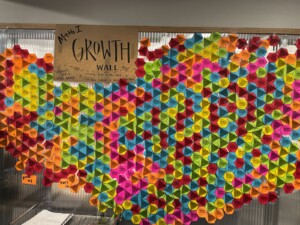Creating Global Competence in Response to the 4th Industrial Revolution

By: Dr. Margy Jones-Carey
Was that George Jetson who just went by on his sky scooter? Was that Captain Kirk who just beamed down? The fourth industrial revolution has arrived. The fourth industrial revolution refers to the current and developing environment where disruptive technologies like artificial intelligence, robotics, and 3-D printing are changing the way we live and work. Is your school ready? Is your classroom ready? Are you ready to teach and prepare students to respond to the skills needed to be successful in response?
In the book, The Fourth Industrial Revolution, Klaus Schwab discusses the skills needed to respond to the demands of a world that has self-driving vehicles and genetic editing. Schwab calls for leaders and teachers to proactive in developing a global cooperation (a global mindset) that helps prepare students with the flexibility and critical thinking skills needed for the future workplace.
Creating a Global Mindset
Developing and nurturing a global mindset in learners today is a must! The Asia Society offers four areas for developing a global mindset: investigate the world, recognize perspectives, communicate ideas and take action. Investigating the world may seem daunting due to limited financial resources or even the location of the school. In a world that is digital and interconnected, schools must help students develop a global mindset. A global mindset allows an individual to apply what is known about our own culture and the culture of others and reacts in the most productive way to a situation. In order to teach students about a global mindset, the teacher must first do a self-analysis of your own knowledge and biases. Once you have looked at yourself, you can begin to create opportunities in the classroom that allow for students to develop critical thinking, problem-solving and flexibility skills to develop a global mindset.
The 4th industrial revolution has provided schools with limitless access to global resources through digital technology. When teaching about world events provide students with the opportunity to investigate how other countries view the event and assist them with recognizing perspectives but using the internet. You are covering world war II in your grade 8 social studies class. Instead of using the text version of what occurred have students explore the events from both a United States perspective and a Japanese perspective. To accomplish this, use the technological resources available, students and teachers read articles written during that period from each country’s online archives and compare perspectives. This can be done with current events as well. Show students coverage of a more recent news event on CNN and then CNN Europe’s or Asia’s perspective on the same story. Exploring other countries/cultures’ perspectives will help prepare students to work with other people from around the world. The Asia society provides great tools and lesson plans to assist teachers in all grade levels and subject areas. In addition, check out the powerful videos created by students who have created a global mindset through traveling to 3rd world countries.
Using project-based learning
Creating a global mindset can be done by focusing on project-based learning on creating opportunities for students to take action in solving real global problems. Students are presented with a question that they need to answer or a problem they need to solve. Creating a global mindset for students, teachers can broaden the question to include the opportunities for students to research about the norms and culture of another area of the world in response to the problem. For example, you are teaching a unit on the principles of water and water purification. You are going to have students do experiments on water purification processes and determine what is needed to purify water so that it may be consumed safely by humans. By simply adding to the problem statement: determine how you would provide purified water to the remote village in Africa (you can be more specific if you wish) include the means of transporting the water to the homes and costs for doing this and create a presentation to convince potential funding sources that your plan will work. This project/problem creates an opportunity for students to investigate the world, gain perspective, communicate ideas and take action.
Virtual Makerspaces
Schools that want to create opportunities for expanding the global mindset can create a makerspace that supports students and staff in working together on projects and even computer networks. These makerspaces provide an ongoing implementation of STEM(STEAM) projects and help students engage on a regular basis with learning, developing and creating all while working with others. Embracing the principles of a global mindset may include a virtual makerspace that allows students to collaborate with students from other places in the world. Imagine a space where students from Brazil, New York City, London, and Hong Kong all share a makerspace dedicated to creating the solution to a problem.
Students must be developing the critical thinking and problem-solving skills required to be successful in a global world. The 4th industrial revolution is creating opportunities for interaction with others around the globe to work together in real-time and at an alarmingly fast pace. Schools need to shift the paradigm of teaching from direct content delivery to facilitate students who know where to find the content, have the skills needed to apply the content appropriately and can problem-solve with a global mindset.
For more, see:
- Shifting Paradigm to Respond to the Demands of a Global World
- The Case for School Makerspaces According to Those Who Use Them
- 4 Ways Project-Based Learning Prepares Students for the Future of Work
Stay in-the-know with innovations in learning by signing up for the weekly Smart Update.





0 Comments
Leave a Comment
Your email address will not be published. All fields are required.